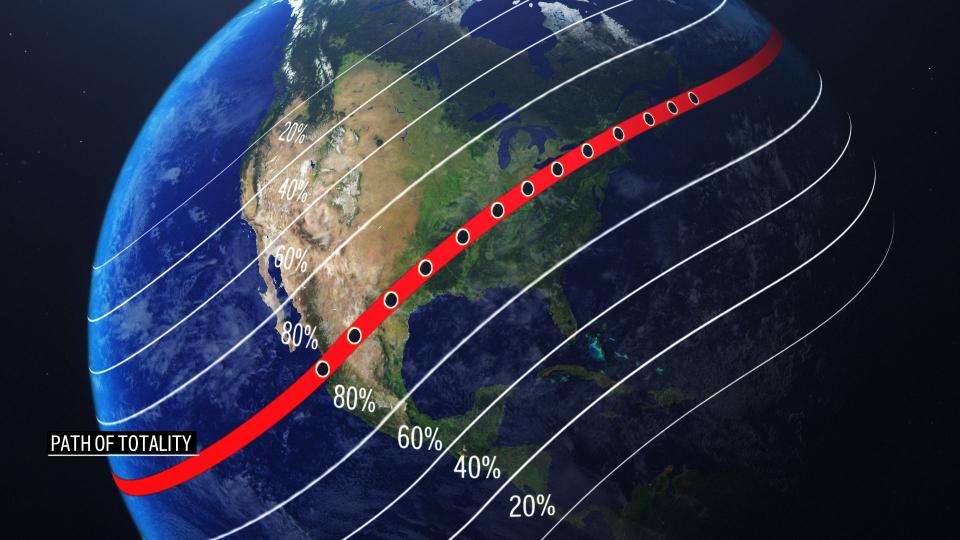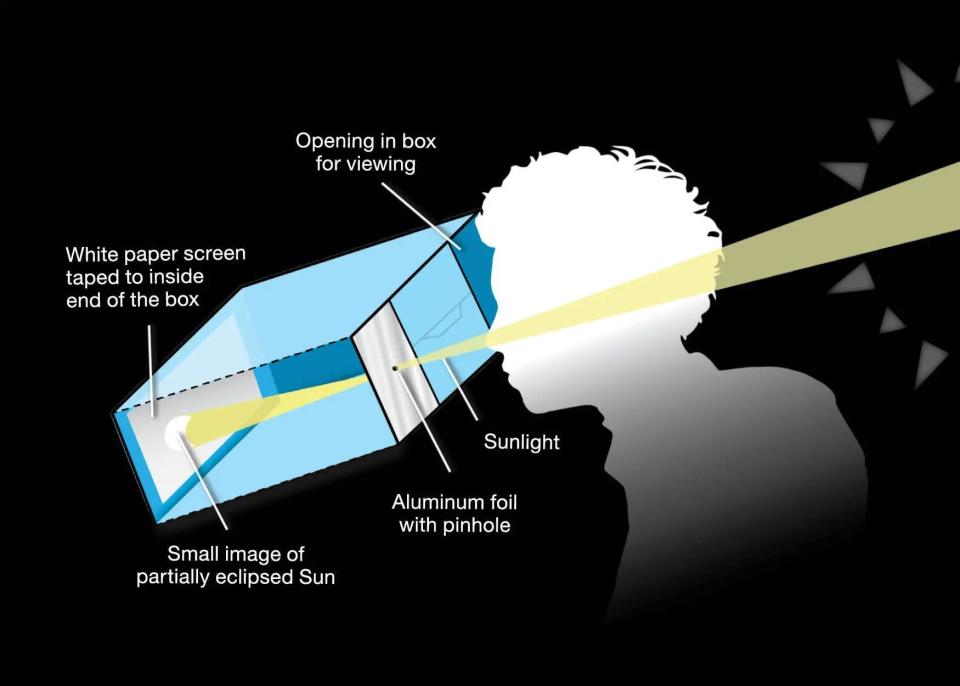A total solar eclipse is coming to the U.S. Here's what you'll see in Georgia.
A total solar eclipse will be visible across the Western Hemisphere on April 8. NASA projects the eclipse will be visible across North America, passing over Mexico, the United States, and Canada.
However, Americans will have different experiences depending on where they live. Residents in more than 10 states will be lucky enough to bear witness to the total eclipse, while others will be able to see at least a partial eclipse.
What can Georgians expect? Here's a closer look at this spring's eclipse, what local residents might be able to see, and what preparations are necessary for enjoying this unique phenomenon:
Georgia stargazing: 5 great places in Georgia to get the best view of astral events
2024 is looking buggy: Will Georgia be part of this year's rare double cicada emergence?
What is a solar eclipse and when is it considered a total eclipse?
As many of us learned in elementary school, the Earth orbits the Sun and the Moon orbits the Earth. Sometimes, the Moon moves between the Sun and the Earth, causing the Moon to block the Sun's light from reaching Earth, casting a shadow down on the planet. This event is called a solar eclipse.
According to NASA, there are three types of solar eclipses. During a total eclipse, the Sun, Moon and Earth are perfectly lined up. Those experiencing it will be at the center of the Moon's shadow. The sky will darken to the point where it seems like dawn or dusk as the entire face of the Sun is covered. Only the Sun's corona will be visible, creating that iconic halo-like effect.

Will the solar eclipse be visible in Georgia?
According to NASA's maps, Georgia will not be in the path of totality. But, a partial eclipse may be visible with about 65-85% of the Sun covered, depending on where you live.
Those who are really invested in seeing the eclipse will want to travel northwest as much as possible. Time and Date, an online platform of weather and astronomical data, estimates that the partial eclipse will begin at about 1:45 p.m. with the peak around 3:04 p.m. and ending about 4:21 p.m.
Georgians wanting to catch the total eclipse will have to take a bit of a road-trip. Probably the closet area of the path is around the bottom-tip of Illinois and the western-edges of Kentucky. This is about 400 miles northwest from Atlanta for those that take I-75.
What is the safest way to watch the solar eclipse?
It is never safe to directly look at the sun with the naked eye or through any lens (camera, binoculars, etc.) without a special-purpose solar filter. Those wanting to watch the eclipse should only use solar viewing glasses, also known as eclipse glasses, or a certified handheld solar viewer.
"Eclipse glasses are not regular sunglasses; regular sunglasses, no matter how dark, are not safe for viewing the sun. Safe solar viewers are thousands of times darker and must comply with the ISO 12312-2 international standard," NASA's website notes. "Always inspect your eclipse glasses or handheld viewer before use; if torn, scratched, or otherwise damaged, discard the device. Always supervise children using solar viewers."

Packs of certified glasses can be purchased on Amazon for $15-25, depending on how many are needed.
Do not use eclipse glasses or handheld viewers while also viewing the event through cameras, binoculars, or telescopes, because those devices require different types of solar filters to be safe.
NASA also recommends indirect viewing methods to view the eclipse without looking directly at the sun. One way is to use a pinhole projector, which has a small opening (for example, a hole punched in an index card) and projects an image of the sun onto a nearby surface. With the Sun at your back, you can then safely view the projected image. Don't look at the sun through the pinhole.
An eclipse projector can also be made with a cardboard box, a white sheet of paper, tape, scissors, and aluminum foil. With the Sun behind you, sunlight will stream through a pinhole punched into aluminum foil taped over a hole in one side of the box. During the partial phases of a solar eclipse, this will project a crescent Sun onto a white sheet of paper taped to the inside of the box. Look into the box through another hole cut into the box to see the projected image.
This article originally appeared on Augusta Chronicle: Solar eclipse in Georgia: Chances of totality, eclipse time, details

